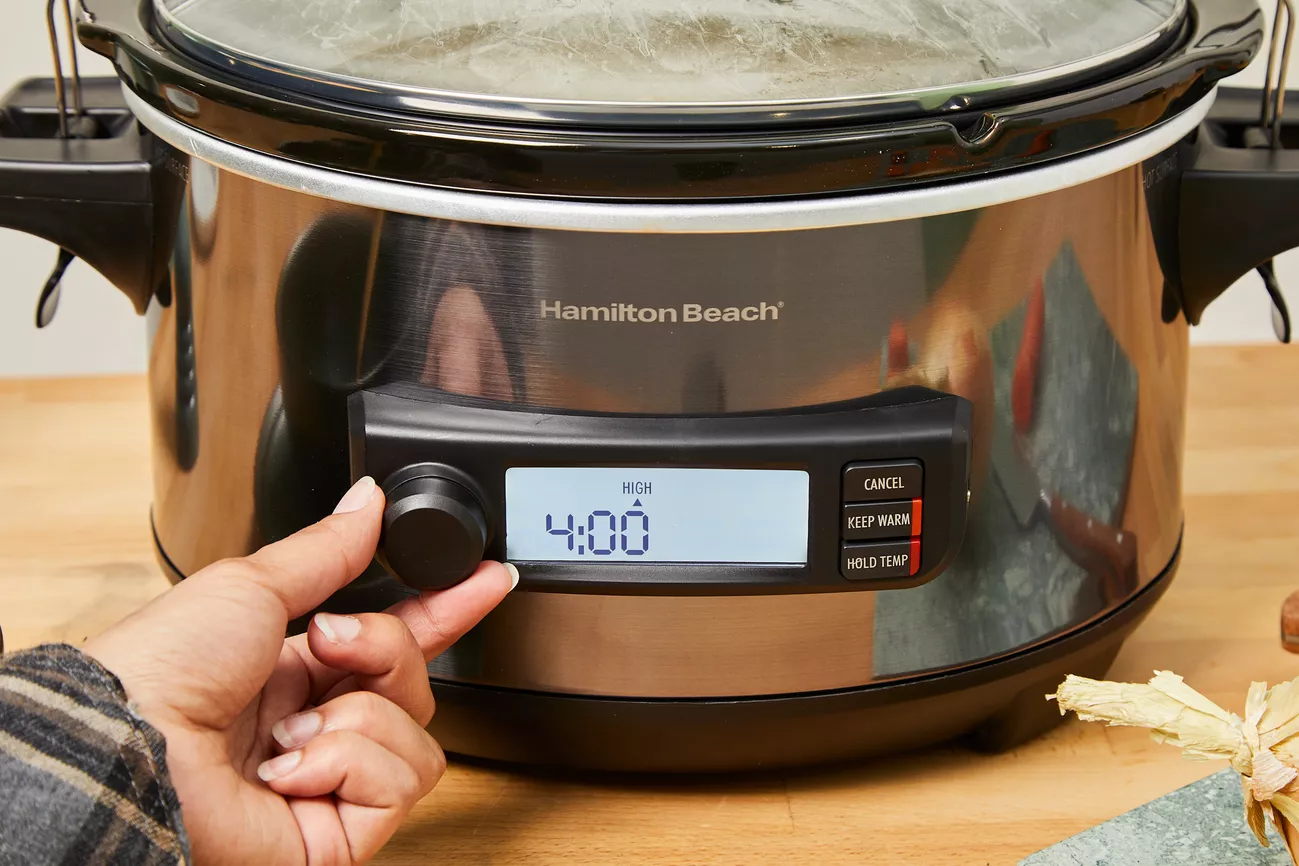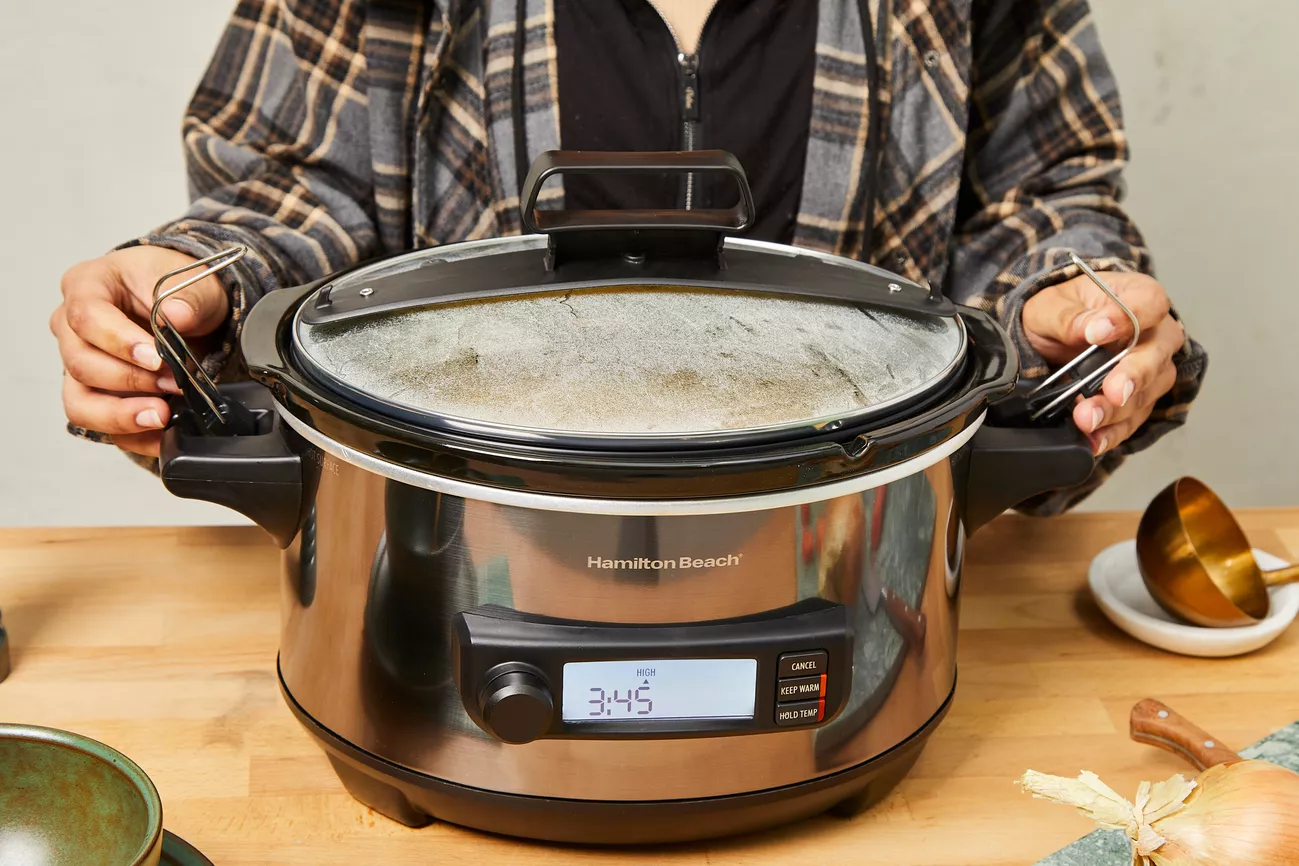Hello, fellow food lovers! Welcome to Crock Potz, your home for all things slow cooking. If you’re anything like me, the idea of a simmering, aromatic meal waiting for you after a long day is pure magic. For years, my secret weapon for achieving this has been a trusty slow cooker. Today, I’m diving deep with a comprehensive Crock-Pot Brand Slow Cooker Review, breaking down why this iconic name is still a titan in our kitchens. Is it just nostalgia, or does the original really hold up against the competition? Let’s find out.
Why Trust This Crock-Pot Brand Slow Cooker Review?
Before we get into the nitty-gritty, let me share a little about my journey. I got my first Crock-Pot as a wedding gift over a decade ago. It was a simple, no-frills model with a dial that said “Off, Low, High, Warm.” I’ve since made everything in it from my signature pulled pork to hearty winter stews. I’ve had my share of triumphs (fall-off-the-bone ribs) and a few mushy-vegetable mishaps along the way. This experience—the good, the bad, and the delicious—is what shapes this review. I’m not just reading a spec sheet; I’m sharing years of real-world kitchen experience.
What Makes the Crock-Pot Brand Stand Out?
The term “Crock-Pot” has become synonymous with “slow cooker,” much like Kleenex is for tissues. This isn’t an accident. They pioneered the category, and that long history comes with several key advantages that keep them relevant.
- Reliability: Crock-Pot has built a reputation for creating workhorse appliances. Their ceramic inserts distribute heat evenly and consistently, which is the cornerstone of good slow cooking. You don’t get the hot spots that can scorch food in lower-quality cookers.
- Simplicity: Even their most advanced models are user-friendly. The core principle of “set it and forget it” is at the heart of their design. You don’t need an engineering degree to make a fantastic one-pot meal.
- Variety: From small 2-quart pots perfect for dips or a meal for one, to massive 8-quart models that can handle a whole chicken or a roast for a crowd, there’s a size and style for every household.
- Affordability: While they offer high-end models, their classic manual cookers remain one of the most budget-friendly ways to get into slow cooking. They offer incredible value for the price.
Breaking Down the Key Models: Which Crock-Pot is for You?
Choosing the right model can feel overwhelming, but it really boils down to your lifestyle. Let’s look at the main types you’ll find on the shelves.
The Classic Manual Crock-Pot: Old School Reliability
This is the quintessential slow cooker. It typically has a single knob with three settings: Low, High, and sometimes Warm.
- Best for: Beginners, budget-conscious cooks, and anyone who is usually home to turn it off.
- My Experience: This is the model I started with. It’s foolproof for recipes that are flexible on time, like a big batch of chili or a pot roast. Its main drawback is the lack of a timer, so you can’t leave it running for 10 hours if the recipe only calls for 8.
The Programmable Crock-Pot: Set It and Truly Forget It
This is the next step up and my personal favorite for busy weeknights. You set the cook time (e.g., 8 hours on Low), and once the time is up, it automatically switches to the “Warm” setting.
- Best for: People who are out of the house for long, unpredictable hours. It’s a lifesaver for avoiding overcooked meals.
- My Experience: This model changed my slow cooking game. I can put dinner on before leaving for work and not worry if I get stuck in traffic. The food is held at a safe, warm temperature without continuing to cook into mush. It’s perfect for more delicate recipes like our creamy Crockpot chicken pasta.
The Cook & Carry Crock-Pot: For the Social Foodie
Have you ever tried to transport a sloshing, hot slow cooker to a potluck? It’s a disaster waiting to happen. The Cook & Carry models solve this with a locking lid that clamps down securely, preventing spills.
- Best for: Anyone who frequently takes dishes to parties, family gatherings, or tailgates.
- My Experience: This is a must-have for the holidays. The locking lid is a game-changer. No more laying towels in the trunk and praying your buffalo chicken dip doesn’t end up all over the car upholstery.
The Real-World Cooking Test: How Does It Perform?
A slow cooker is only as good as the food it makes. Here’s how the Crock-Pot brand handles some classic slow cooker jobs.
Tough Cuts of Meat (Pot Roast, Pulled Pork): This is where the Crock-Pot truly shines. The low, slow, and moist heat is perfect for breaking down tough connective tissues in cuts like chuck roast or pork shoulder, turning them incredibly tender and flavorful. The heavy ceramic pot retains heat beautifully, ensuring a consistent temperature for hours. Result: A+
Soups and Stews: Crock-Pots are fantastic for simmering soups and stews all day, allowing the flavors to meld and deepen in a way you can’t replicate on the stove in an hour. Root vegetables become tender without disintegrating. Result: A
Chicken: This can be tricky. Boneless, skinless chicken breasts can dry out if cooked for too long. My advice? Stick to shorter cook times (3-4 hours on Low) or use bone-in thighs, which are far more forgiving. Programmable models help immensely here. Result: B+ (with the right technique)
According to Sarah Carter, a food blogger specializing in convenient family meals, “The key to a perfect Crockpot meal is layering your ingredients correctly. Always place root vegetables at the bottom where the heat is most consistent. They act as a rack for your meat and cook perfectly in the direct heat.”
Tips and Tricks for Crock-Pot Success
Over the years, I’ve learned a few things that can elevate your slow cooker meals from good to great.
- Don’t Overfill: For the best results, your Crock-Pot should be between one-half and two-thirds full. Too little, and food can burn; too much, and it may not cook evenly or safely.
- Sear Your Meat: I know, it’s an extra step. But browning your meat in a skillet before adding it to the Crock-Pot creates a depth of flavor that you just can’t get otherwise. It’s worth the extra five minutes.
- Resist the Urge to Peek: Every time you lift the lid, heat escapes, and you can add 15-20 minutes to the cooking time. Trust the process! Do not open the lid unless the recipe specifically tells you to.

- Thicken Your Sauce at the End: Slow cookers trap moisture. If your sauce is too thin at the end, remove the lid, turn the setting to High for the last 30 minutes, or stir in a slurry of cornstarch and water.
Is a Crock-Pot Brand Slow Cooker Worth It in 2024?
In a world of Instant Pots and air fryers, does this classic appliance still have a place? Absolutely. While multi-cookers are great, they don’t replicate the slow, gentle cooking process that makes certain dishes shine.
Pros:
- Incredibly easy to use.
- Energy-efficient compared to an oven.
- Perfect for tenderizing cheap, tough cuts of meat.
- “Cook & Carry” models are brilliant for travel.
- Highly affordable entry point.
Cons:
- Can sometimes overcook vegetables or lean meats if left too long.
- Doesn’t brown or crisp food (requires a separate step).
- Takes up significant counter or storage space.
Frequently Asked Questions
Can you put frozen meat in a Crock-Pot?
Food safety experts advise against it. A slow cooker heats up too slowly, allowing the frozen meat to linger in the “danger zone” (40°F – 140°F) where bacteria can multiply. It’s always best to thaw meat completely before cooking.
What’s the difference between the Low and High settings?
Both settings cook food to the same final temperature (around 209°F). The only difference is the time it takes to get there. The High setting gets there faster. As a general rule, one hour on High is equivalent to about two hours on Low.
Do I need to add liquid to my Crock-Pot?
Usually, yes. Slow cooking relies on moist heat. Most recipes will call for at least 1/2 cup of liquid (like broth, water, or canned tomatoes) to create steam and prevent scorching, unless you’re cooking something with a lot of natural moisture, like a large roast.
How do I clean my Crock-Pot insert?
Most modern ceramic inserts and glass lids are dishwasher safe. For tough, baked-on food, let the insert cool, then fill it with warm, soapy water and let it soak for an hour before scrubbing gently.
Is the Crock-Pot brand better than other slow cookers?
While many brands make excellent slow cookers, Crock-Pot’s long-standing reputation for reliability and consistent performance is well-earned. They offer a great balance of quality, features, and price, making them a trustworthy choice for both new and experienced cooks.
The Final Verdict
After years of consistent use, my final Crock-Pot brand slow cooker review is overwhelmingly positive. It remains an indispensable tool in my kitchen for creating convenient, flavorful, and budget-friendly meals. It’s the champion of the “dump dinner” and the secret to the most tender pot roast you’ll ever eat.
Whether you’re a busy parent trying to get dinner on the table or a home cook looking to explore the magic of low-and-slow cooking, you simply can’t go wrong with a classic Crock-Pot.
Have you had your own Crock-Pot adventures? I’d love to hear them! Share your favorite tips or recipe successes in the comments below.
